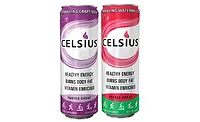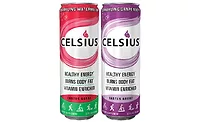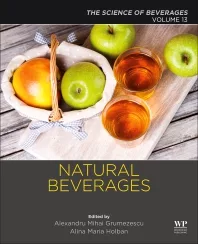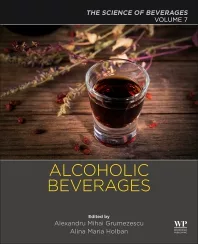Natural energy ingredients trend continues
Health halo of natural energy ingredients boosts consumer acceptance
Americans seem to be busier than ever. The average work day is 8.6 hours, according to Rochester, N.Y.-based Harris Interactive, and 39 percent of Americans between the ages of 19 and 36 report that they do not have enough leisure time, according to Chicago-based Mintel. Under these conditions, 23 percent of American adults cite a lack of energy as the main reason for their lack of productivity at work, according to a Harris Interactive poll conducted in June 2013 on behalf of Santa Monica, Calif.-based Red Bull North America Inc. For an energy boost to get them through the day, consumers often turn to beverages, including water, coffee and energy drinks, according to Red Bull’s August 2013 “Getting Energized on the Job” infographic. Ingredients in energy beverages, in particular, can help consumers boost concentration and battle workplace fatigue, it states.
“Almost every consumer is seeking an energy boost in their daily drink intake due to busy lifestyles,” says Catherine Barry, director of marketing for the National Honey Board, Firestone, Colo. “Consumers are seeking a more nutritious day-to-day way to combat fatigue.”
Beverages can be a good vehicle to deliver energy ingredients because of their multi-functional format, says Michael Crabtree, technical sales manager at Bioenergy Life Science, Ham Lake, Minn. “They serve as a high delivery volume of specified nutrients and retain an element of satiety,” he says. Plus, liquids tend to have a denser matrix of ingredients per serving compared with powdered mixes, he adds.
Consumers and retailers also tend to associate energy benefits with beverages, says Gregory Drew, director of Kearny, N.J.-based Pharmachem Laboratories Inc.’s food and beverage group. “It just seems to me that if you walked into a supermarket and asked for an energy product, clerks would point you to [energy drinks and shots] — that’s sort of the category creator.”
Caffeine is one of the most popular beverage energy ingredients, Pharmachem’s Drew says. In the year ending March 10, 169 beverages containing caffeine were launched, including different packaging styles for the same product, according to Mintel’s Global New Products Database. This energy ingredient is not limited to energy drinks and shots, though. The range of beverages containing caffeine spans carbonated soft drinks (CSDs), protein shakes, drink mixes, sports drinks, juice drinks and liquid concentrates as well, according to the database.
These types of beverages mostly are targeted toward teens and consumers in their mid- to late-20s, notes Russ Hazen, premix innovation manager at Fortitech Premixes, Schenectady, N.Y. However, baby boomers looking for a pick-me-up to fuel their 24/7 lifestyles are another group that is drawn to this category, he says.
On average, Americans consume 300 mg of caffeine each day, according to the U.S. Food and Drug Administration (FDA). However, the FDA has cited 400 mg a day, or the equivalent of four or five cups of coffee, as an amount generally not associated with dangerous, negative effects, Fortitech’s Hazen notes. Thirty-eight percent of total caffeine intake comes from CSDs, 24 percent comes from coffee, and 6 percent comes from energy drinks, according to the Centers for Disease Control and Prevention (CDC), Atlanta.
Despite these intake levels, some consumers are leery of caffeine because of the “crash” associated with it. Crashes typically are associated with synthetic caffeine sources, but the effect varies by consumer and his or her environment, diet and personal tolerance, explains Kristen Wemer, lab manager at Flavorman, Louisville, Ky. To minimize any potential crash effect, caffeine can be paired with ingredients such as L-theanine, she says.
Blue California, Rancho Santa Margarita, Calif., offers its L-Tea Active natural L-theanine 98 percent ingredient for pairing with caffeine. The FDA generally recognized as safe (GRAS) ingredient induces relaxation but also boosts mental clarity, focus, concentration and productivity, the company says. Plus, the water-soluble ingredient does not add taste, color or odor to a beverage, it adds.
A natural boost
Another way to avoid the crash issue is to utilize natural sources of caffeine, which are not associated with crash effects, Flavorman’s Wemer says. Because of this and other health benefits, natural caffeine sources have become some of the most popular energy ingredients lately, she says. “The natural trend is continuing its growth in the market, and we’re seeing people want to create naturally positioned energy drinks,” she says. “Using caffeine from things like green tea, yerba mate, coffee beans and guarana are more well-received than using synthetic anhydrous caffeine.”
The health halo of these natural sources can help pave the way for consumer acceptance of these ingredients in energy beverages and positively impact sales, Foritech’s Hazen adds.
Blue California offers several natural plant extracts standardized to caffeine, their natural active ingredient, says Executive Vice President Cecilia McCollum. For example, its guarana extract with 22 percent caffeine is a natural caffeine source from the guarana seed. The company also offers Natural Caffeine 99 Percent derived from green tea leaves. “The demand for this ingredient is growing,” she says. “It was developed for use in [ready-to-drink] beverages and is the ideal addition to an energy drink.”
However, many products containing natural caffeine sources must be labeled as dietary supplements instead of beverages because they contain ingredients such as ginkgo biloba, milk thistle extract and other dietary ingredients that have not been approved by the FDA and, therefore, would not allow the product to be labeled as a conventional beverage, Flavorman’s Wemer explains.
On the formulation side, natural caffeine ingredients pose a couple of other challenges, Wemer adds. Natural caffeine ingredients typically contribute earthy or herbal flavors that sometimes need to be overcome, she notes. In addition, they often require additional processing steps, such as heat treatment for pasteurization, and often are more expensive than using synthetic ingredients, she says. However, sometimes the extra cost is worth it in order to have a clean label on a beverage, Blue California’s McCollum says.
In addition to natural energy solutions like guarana and green tea extract, Sam Wright IV, chief executive officer of The Wright Group, Crowley, La., notes that consumers are asking for B vitamins such as thiamine, carnitine, niacin and pantothenic acid.
B complex vitamins are popular energy ingredients because of the roles they play in increasing the body’s energy levels through involvement in biochemical processes, including the Krebs Cycle, a chemical reaction that creates energy in aerobic organisms, Fortitech’s Hazen explains. For example, vitamin B1 or thiamine helps convert blood sugar to energy, while vitamin B3 or niacin creates oxidation-reduction reactions, and vitamin B5 or pantothenic acid enhances the release of energy from carbohydrates in the Krebs Cycle, he says.
Powered workout
When included in beverages, D-ribose, a form of sugar produced by the body, also can contribute energy for physical endurance, Hazen says. “Additional D-ribose may help replenish [adenosine triphosphate] (ATP) in the body and help boost muscle energy, which helps improve performance and exercise duration,” he explains. In addition, D-ribose can help modulate the formulation of oxygen free radicals during exercise and recovery, which can decrease inflammation and soreness and shorten the needed recovery time between workouts, he notes.
Bioenergy Life Science offers a patented form of D-ribose called Bioenergy Ribose. This natural energy ingredient is available in both powdered and agglomerated forms and is completely soluble in liquid systems while formulating amicably with 95 percent of auxiliary ingredients in dry-blend systems, Crabtree says.
New York-based Kyowa Hakko USA Inc. also offers its Sustamine ingredient for physical energy during workouts and recovery. The dipeptide ingredient combines amino acids L-alanine and L-glutamine to create a chemical structure that easily is absorbed by the body to help it rehydrate, replenish and recover, the company says. More specifically, Sustamine has been shown to enhance water and electrolyte absorption in the intestines, stimulate glycogen synthesis, inhibit muscle protein break-down while promoting muscle protein synthesis, contribute to better nutrient absorption by protecting the integrity of the gastrointestinal tract, and boost the immune system, it says.
Another important ingredient for muscle energy is carbohydrates, which help maintain muscle glycogen, a major fuel source for athletes, according to the National Honey Board’s Barry. Honey provides 17 grams of carbohydrates per tablespoon, she says.
In addition to providing energy, honey also doubles as a sweetener, Barry says. Honey is as much as 25 percent sweeter than sucrose and can be used in smaller quantities to attain a similar flavor profile as other sweeteners, she says. Plus, it has the ability to smooth or mask the flavor profile of functional ingredients that can carry off-flavors, in addition to interacting with other flavors to enhance the overall taste of a beverage, she adds.
Probably one of the biggest benefits of using honey as an energy ingredient from a marketing standpoint is the clean label image it provides, Barry says. The ingredient can be labeled as honey on the beverage package because it does not contain any other additives or ingredients and naturally is made in a beehive as opposed to a manufacturing plant, she says.
“Consumers continue to care more and more about what ingredients go into products they consume, and … honey is familiar to consumers and promotes a clean label,” Barry says.
Using familiar ingredients or natural claims and educating the public about specific energy ingredients can help boost acceptance for the energy ingredient industry. “The general public has a tendency to blame entire systems, as opposed to educating themselves on the individual ingredients,” Bioenergy’s Crabtree says. “Energy ingredients are under scrutiny because they are largely a part of stimulant-based beverage systems, which have proven to be harmful if consumed in large quantities. Of course, not all common energy drink ingredients are culpable, but in many cases, ingredients that stimulate the central nervous system become guilty by association. It is important for companies distributing such ingredients to be proactive in the areas of [research and development] and [quality control] to ensure lines are drawn appropriately.”
Looking for a reprint of this article?
From high-res PDFs to custom plaques, order your copy today!








